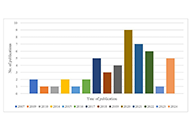
Food Contaminants: Analysis, Occurrence and Risk Assessment
Guest Editors
Olga Pardo E-Mail
Department of Analytical Chemistry, University of Valencia, 50th Dr. Moliner St., 46100 Burjassot, Spain
Research Keywords: Food safety, analytical chemistry, chromatography, mass spectrometry, method development, risk assessment, contaminants, human biomonitoring
Francesc A. Esteve-Turrillas E-Mail
Department of Analytical Chemistry, University of Valencia, 50th Dr. Moliner St., 46100 Burjassot, Spain
Research Keywords: Analytical chemistry, food safety, chromatography, mass spectrometry, immunoassays, pesticide and drug analysis, extraction techniques
About the Special lssue
Food contaminants, as defined in the regulation of the European Commission nº 315/93, are substances that are unintentionally added to food and may be present in food as a result of various stages of its production, processing or transport. Furthermore, they can also arise from environmental contamination.
Human exposure to food contaminants can lead to acute or chronic health problems, such as organ damage, developmental disorders, and an increased risk of cancer. Given the potential dangers associated with these substances, strict regulations are needed to ensure the safety of the food supply. In an effort to enhance food safety and protect consumer health, the new regulation of the European Commission, nº 915/2023, establish maximum levels in both animal and plant-based foods relating to mycotoxins, vegetable toxins, metals, halogenated persistent organic pollutants (such as dioxins and polychlorinated biphenyls, perfluoroalkyl substances…) or process contaminants, among others. These limits are established based on rigorous risk assessments and take into account factors such as toxicity, exposure levels, and vulnerable population groups. However, the generation of new data results in an ever-changing landscape of regulatory standards that need to be continuously adapted to in order to ensure that foods remain compliant with the current regulations.
The proposed special issue is aimed to address different perspectives related with i) the development of new analytical methodologies for monitoring contaminants in food, ii) research that provides information on the occurrence of food contaminants, and iii) risk assessment results.
Keywords: Food safety, (emerging) contaminants, occurrence data, exposure, risk assessment
Published Articles



